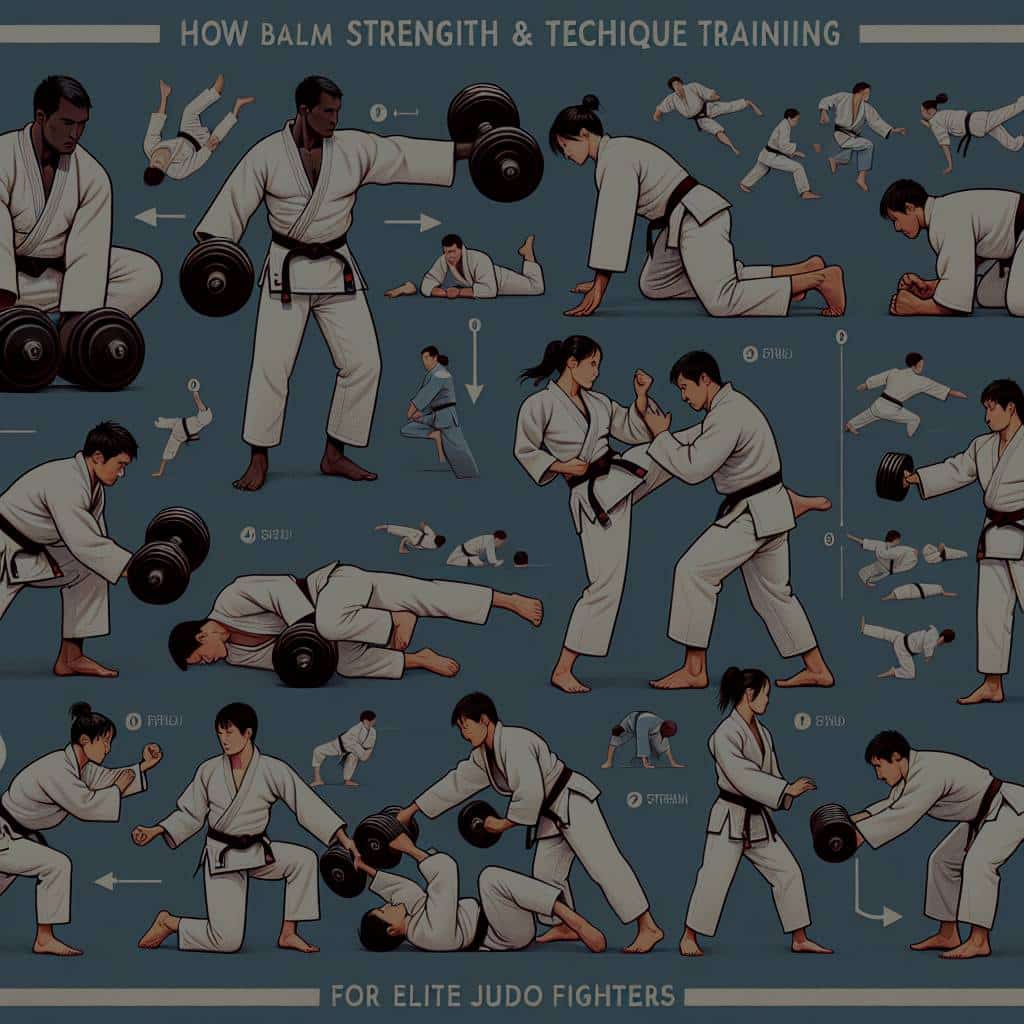How to Balance Strength and Technique Training for Elite Judo Fighters?

Training for a sports discipline such as judo requires a careful balance of strength and technique. Athletes at the elite level cannot afford to focus solely on one aspect at the expense of the other. However, achieving this equilibrium is no small feat. It calls for the use of diverse resources, from the vast knowledge on Google to scholarly publications on PubMed, Crossref, and PMC. This well-rounded approach ensures that athletes are equipped both physically and mentally, paving the way for optimum performance.
Balancing Strength and Technique: The Key to Success in Judo
The first step to balancing strength and technique training involves understanding why this balance is essential. In judo, strength and technique are equally crucial. Strength provides the power necessary for executing moves and resisting opponents, while technique ensures moves are performed correctly and efficiently.
Have you seen this : What Are the Dynamics of Team Leadership in High-Pressure Sailing Competitions?
The integration of strength and technique is not a simple two-step process; it’s an intricate interplay that evolves over time. A judo fighter might start with raw power but gradually refine their technique as they advance. Conversely, some athletes may master the technical aspects first, then work on building their strength.
Using scholarly resources like Google Scholar, PubMed, and Crossref can provide valuable insights into this balance. These platforms offer access to a wealth of scientific studies and articles on the subject, providing evidence-based guidance on how to train effectively.
In parallel : How Can Virtual Coaching Platforms Support Aspiring Marathon Runners?
Developing a Balanced Training Program
Developing a balanced training program is a meticulous process that requires careful planning and execution. It should incorporate elements of strength and technique training in a way that compliments each other. The program should also be tailored to the unique needs and abilities of individual judo fighters, as what works for one may not work for another.
To develop a well-rounded training program, leverage the insights gained from Google, PubMed, Crossref, and PMC to study the latest research and trends in sports training. This will give you a more comprehensive understanding of the various methods and strategies available, and how they can be integrated into a single, effective program.
You might consider incorporating a mix of weightlifting exercises to build strength, judo-specific drills for technique, and cardiovascular workouts for stamina. Moreover, taking the time to monitor and adjust the program based on the athlete’s progress is crucial for ensuring its effectiveness and preventing overtraining.
Group Training vs. Individual Training
It’s essential to consider the dynamics of group training versus individual training when striving to balance strength and technique. Both methods offer unique benefits and should be utilized in a way that maximizes their potential.
Group training can provide a sense of camaraderie and competition that pushes athletes to perform at their best. It also offers opportunities for judo fighters to learn from one another, honing their technique through observation and mimicry. Meanwhile, individual training allows for more personalized attention and specific technique refinement, paving the way for significant improvements in performance.
Tapping into the Power of BJJ
Brazilian Jiu-Jitsu (BJJ) is a martial art that shares many similarities with judo. Both sports emphasize the importance of technique over brute strength, making BJJ a valuable resource for judo fighters looking to refine their technique.
BJJ’s emphasis on ground fighting and submissions can complement judo’s focus on throws and standing techniques. By cross-training in BJJ, judo fighters can hone their technique, improve their strength, and become more well-rounded athletes. The grappling techniques of BJJ can also help judo fighters develop new strategies and skills, boosting their performance on the mat.
Harnessing the Power of the Mind
Physical training is only half the battle. The mind plays an equally critical role in judo, influencing everything from strategy and technique to strength and endurance. Consequently, mental conditioning should be given just as much attention as physical training in a balanced program.
Mental strength can be built through various methods, including meditation, visualization exercises, and even cognitive behavioral therapy. By harnessing the power of the mind, judo fighters can elevate their performance levels, ensuring they are mentally prepared for every match and can handle the pressures that come with competing at an elite level.
In conclusion, balancing strength and technique training for elite judo fighters is a multifaceted process that involves careful planning, the use of varied resources, and a commitment to both physical and mental conditioning. With the right approach, judo fighters can achieve this balance and maximize their performance both on and off the mat.
Utilizing Sports Medicine and High Intensity Training
Incorporating sports medicine principles and high intensity training methods can be beneficial in creating a more balanced training program for judo fighters. Understanding the mechanics of the body, particularly the lower limb which plays a crucial role in judo, can help in devising strength training exercises that not only enhance power but also ensure safety and longevity in the sport.
High intensity training, on the other hand, can significantly improve an athlete’s cardiovascular fitness and muscle endurance. This form of training involves short, intense bouts of exercise, which can simulate the challenging physical demands of a judo match. High intensity training, like the seoi nage drill, a classic judo throw, can be incorporated into a judo fighter’s routine to increase both strength and technique. However, it’s crucial to monitor the intensity to prevent overtraining.
Google Scholar, PubMed, and Crossref can be instrumental in discovering the latest sports med and high intensity training research. These platforms house free articles and PMC free resources that provide valuable, peer-reviewed information. Obtaining data from these databases can provide a robust, evidence-based foundation for a training program.
Integration of Martial Arts: Jiu-Jitsu and Strength Conditioning
The martial art of Jiu-Jitsu, similar to judo, can provide a beneficial cross-training opportunity. Jiu-Jitsu’s focus on ground fighting can complement judo’s emphasis on standing techniques and throws, enabling judo fighters to become more versatile athletes.
Strength conditioning in Jiu-Jitsu focuses on leveraging the opponent’s strength against them, a concept that can be beneficially incorporated into judo training to refine technique and improve strength. By understanding and implementing Jiu-Jitsu’s principles, judo fighters can enhance their ability to execute moves like the seoi nage more effectively.
A judo fighter’s training program should therefore include elements of Jiu-Jitsu, with particular focus on its strength conditioning exercises. Again, using resources like Google Scholar and PubMed can provide valuable insights from articles about integrating Jiu-Jitsu into judo practice.
Conclusion: Achieving Balance through Strategic Training
Achieving a balance between strength and technique training for elite judo fighters is an intricate process. It requires careful planning, use of scholarly resources and the integration of varied training methods.
Google Scholar, PubMed, and Crossref can be instrumental in providing access to scholarly articles and research studies on strength training, sport medicine, martial arts and high-intensity training. These platforms can provide the much-needed evidence-based guidance in developing a well-rounded, carefully tailored training program.
Incorporating elements of sports med, judo-specific drills, high intensity training, and techniques from other martial arts like Jiu Jitsu can create a comprehensive training program that effectively balances strength and technique.
Moreover, consideration of individual preferences, mental conditioning and constant monitoring and adjustment of the program based on the athlete’s progress is imperative.
By following this multi-faceted approach, judo fighters can achieve the desired balance between strength and technique, leading to improved performance and a higher chance of success in their sport.
